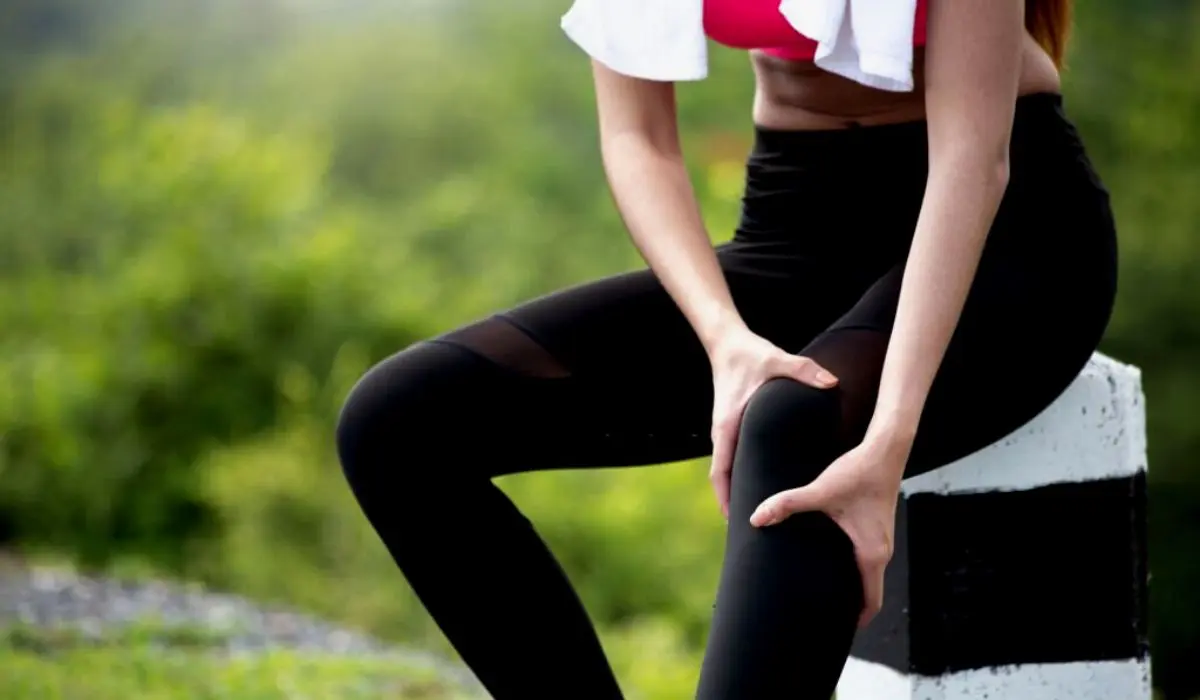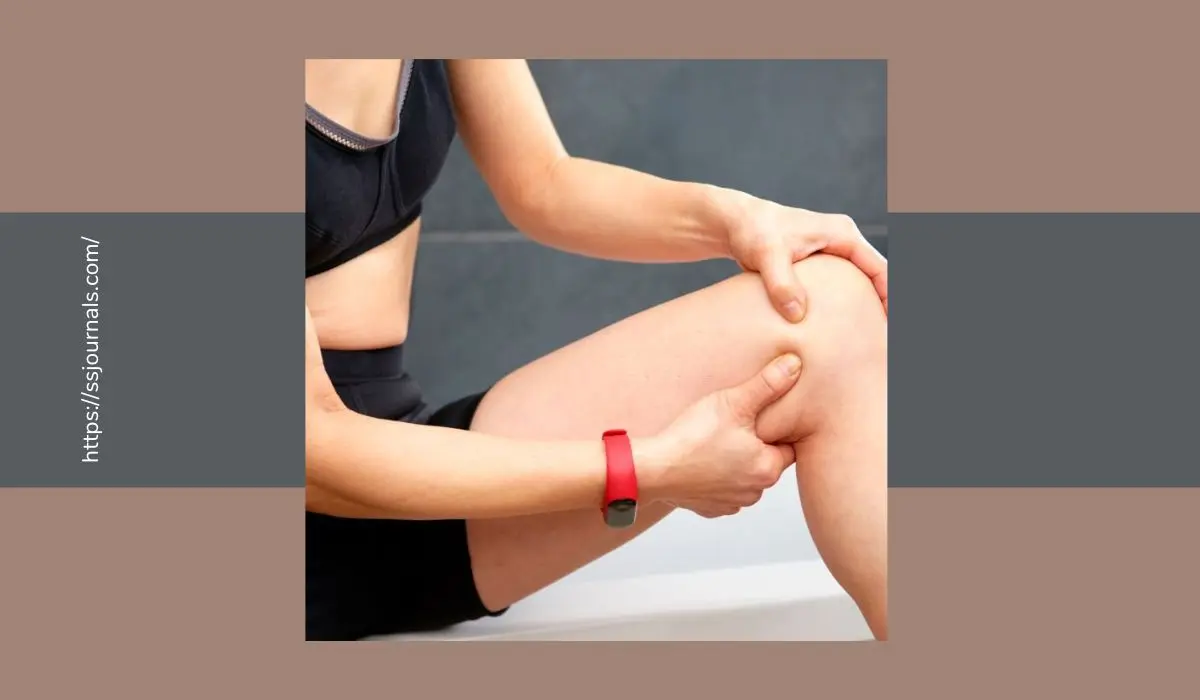Muscle spasms in the legs can be really annoying and painful. But you can get relief right away! Figure out why it’s happening – whether it’s due to fatigue, dehydration, or an electrolyte imbalance.
Drink enough water each day, and make sure to replace important minerals like potassium and magnesium. This will help stop dehydration and electrolyte imbalance.
Also, add stretching to your routine. This will help improve flexibility and ease tight muscles. Stretch your calves, hamstrings, and quads.
Include foods with potassium in your diet. Bananas, avocados, and spinach are great sources of this mineral that is important for your muscle health.
Massaging the affected area can also help. Rub or knead the cramped muscles until they relax. Heating the area with a warm towel or a hot bath can also help reduce pain and tension.
Take action today! Make sure your legs have optimal function and comfort. Implement these strategies and get rid of leg spasms!
Understanding Muscle Spasms In Legs
To understand muscle spasms in legs, delve into what they are, the causes behind them, and the common symptoms. This knowledge will form the foundation for finding immediate relief from muscle spasms in the legs.
What Are Muscle Spasms?
Muscle spasms in the legs can be sudden and intense. They cause sharp cramping sensations and can last for seconds or minutes. During an episode, the muscle may feel hard and it can be difficult to move. These spasms can occur without warning, both during the day and night.
Managing and preventing these spasms is important. Staying hydrated, stretching, and having balanced electrolytes can help reduce the risk of them occurring. So, take care of your leg muscles and avoid those unexpected moments!
Causes Of Muscle Spasms In Legs
Muscle spasms in the legs can have various causes. Dehydration can lead to an electrolyte imbalance, straining muscles and triggering spasms. Additionally, medical conditions such as peripheral artery disease or nerve damage can be contributors.

To avoid and ease muscle spasms, here are some ideas:
- Hydrate! Keeping up with water intake is key to electrolyte balance and muscle function.
- Stretching regularly pre- and post-exercise can loosen muscles and prevent spasms.
- Include a nutrient-dense diet of magnesium, calcium, and potassium-rich foods such as bananas, leafy greens, nuts, and seeds.
- Massage therapy or applying heat can increase blood flow and relax tense muscles.
Common Symptoms Of Muscle Spasms In Legs
Leg muscle spasms can cause a few common symptoms: sudden, involuntary contractions; pain; discomfort; stiffness; and cramping. Additionally, they can impede one’s mobility and quality of life by making it difficult to walk or stand for long periods.
A remarkable example is that of an athlete who endured severe leg spasms during a competition. Despite the immense pain, they finished the race, proving that even elite athletes can struggle with muscle spasms, yet strength and determination can help conquer any challenge!
Immediate Relief Options For Muscle Spasms In Legs
To relieve muscle spasms in your legs immediately, try these solutions: stretching exercises, heat or cold therapy, and over-the-counter pain relievers. Stretching exercises can provide immediate relief, while heat or cold therapy can help soothe the muscles. Additionally, over-the-counter pain relievers can offer quick relief from the discomfort.
👉 Stretching Exercises For Immediate Relief
Stretch exercises offer quick relief from leg muscle spasms. They help relax the muscles and ease the pain. To do them, use these 4 steps:
- Stand with feet hip-width apart.
- Step forward with one leg, and bend slightly at the knee.
- Straighten your back and lean forward gently, feeling a stretch in the back of your leg.
- Hold for 10-15 seconds and then release. Repeat with the other leg.
Do these exercises anywhere, anytime, to provide instant relief from leg muscle spasms. Don’t overdo it though – if you feel pain or discomfort, stop right away.
Amazing! According to The Journal of Sports Medicine and Physical Fitness, stretching exercises boost flexibility and reduce the risk of muscle injuries.
👉 Applying Heat Or Cold Therapy
One person found relief from leg muscle spasms through heat therapy. The person tried it out by using a heating pad on her legs for 20 minutes each day. After a week, the spasms became less frequent and intense.
Without medication or invasive treatments, the person regained control of the leg muscles.
Plus, here are some other tips:
- Heat therapy: Use a hot water bottle, heating pad, warm towel, or take a warm bath or shower to relax tight muscles, increase blood flow, and ease spasms.
- Cold therapy: Numb the affected area and reduce inflammation with an ice pack or cold compress for 15-20 minutes.
- Timing: Use heat therapy within 48 hours of onset and cold therapy immediately after an injury or during flare-ups.
- Alternating: Take turns between heat and cold therapy, 15-20 minutes each.
- Precautions: Put a towel between the heating pad/ice pack and your skin to avoid burns.
- Consultation: Check with a healthcare professional if you have existing medical conditions.
Massage the area as well for added relaxation and relief.
👉 Using Over-The-Counter Pain Relievers
When dealing with muscle spasms, nonsteroidal anti-inflammatory drugs (NSAIDs) like ibuprofen or naproxen sodium can help. Be sure to read the directions and not exceed the recommended dose. Also, keep in mind these meds may cause side effects such as drowsiness or stomach irritation.
For long-term relief, preventive measures like stretching exercises, proper hydration, and keeping good posture are recommended. Additionally, a study in The Journal of Rheumatology showed that NSAIDs are effective in reducing pain and improving functionality.
However, if you experience persistent or severe muscle spasms, it is important to seek medical attention to determine the cause and receive appropriate treatment.
Preventive Measures to Reduce the Frequency of Muscle Spasms in Legs
To reduce the frequency of muscle spasms in your legs, turn to preventive measures. Stay hydrated and maintain electrolyte balance, incorporate regular exercise and stretching routines, and manage stress while avoiding triggers. These solutions will help you find relief and promote healthier leg muscles.
👉 Staying Hydrated And Maintaining Electrolyte Balance
Staying hydrated and maintaining electrolyte balance is crucial!
Replace fluids and minerals your body loses to give your muscles the hydration and electrolytes they need to function. Hydration regulates body temperature and aids in nutrient and oxygen transportation to muscles.
Exercise and rigorous activities make muscles contract and relax, increasing the demand for water and electrolytes. Dehydration disrupts these processes, leading to spasms or cramps.
Maintaining adequate electrolyte balance is just as essential. Electrolytes like sodium, potassium, calcium, and magnesium transmit electrical signals throughout the body, allowing muscles to contract and relax. A deficiency in any of these electrolytes can result in muscle imbalances and spasms.
Other tips:
- Drink at least 8 glasses of water a day.
- Incorporate fluids rich in electrolytes like coconut water or sports drinks.
- Consume foods high in essential minerals like bananas (potassium) and leafy greens (calcium).
Follow these practices consistently to reduce muscle spasms in your legs.
Prevention is better than cure! Take care of hydration and electrolyte needs to avoid leg cramps.
👉 Incorporating Regular Exercise And Stretching Routines
Exercising regularly and stretching are key for reducing muscle spasms in the legs. These routines can increase muscle flexibility, strength, and mobility. Walking, jogging, swimming, and cycling are great for improving circulation and delivering oxygen and nutrients.
Stretching exercises like calf and hamstring stretches can elongate muscles and reduce tension. Strength training for the legs, such as squats and lunges, can make them stronger and less prone to spasms.
Plus, drinking enough water will help prevent dehydration-induced cramps. Before starting any routine, consult with a healthcare professional.
For more specific advice, consider working with a certified fitness trainer or physical therapist.
👉 Managing Stress And Avoiding Triggers
Managing stress and avoiding triggers are essential for preventing muscle spasms. Incorporate relaxation techniques like deep breathing and meditation into your daily routine.
Stay hydrated, maintain a balanced diet, and stretch regularly to reduce muscle tension. Identify triggers such as overexertion or dehydration and take preventive measures to alleviate spasms.
Read More:- How Do Muscle Strains Occur? Symptoms, Causes, And Prevention
Conclusion
Muscle spasms in legs? Find relief fast! It’s essential to act quickly and find treatments that work.
Hydration can help fight spasms. Get enough fluids, and watch your electrolyte balance – especially potassium and magnesium.

